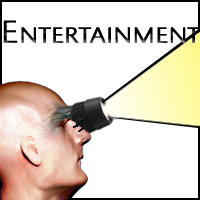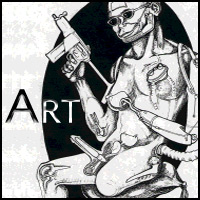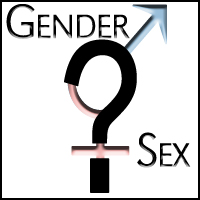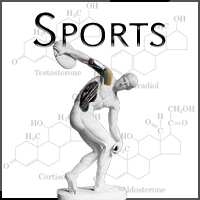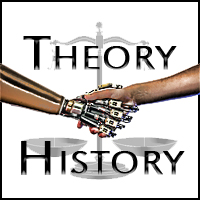
Cyborg Bodies in MedicineSamuel Dokko For decades, cyborgs have been exclusively associated with science fiction and fantasy. Only in the futuristic genre can the organic and inorganic coalesce to form a cognitive being. In these novels, scientists are like gods that confer humans with unimaginable enhancements, making them greater than the average human. Cyborgs are the tangled creation of human flesh and metal; they can possess incredible strength, speed or increase mental capacity. These cyborgs are praised and glamorized to be super humans; some authors even go as far to distinguish these enhanced humans as a different species that has evolved by the hands of man himself. Although cyborgs seem to come from the imagination, there are cyborgs walking and living among us. They aren’t plated in metal or talk in robotic voices, but are like regular humans. These cyborgs are medical cyborgs. Some of them have mechanical devices implanted in their ears to help with hearing and overcome deafness or have an artificial heart to maintain the circulation of blood in their body. Producing a medical cyborg is a collaboration of medicine and technology to enhance or restore human biological processes. For centuries, man has depended on technology, understanding human physiology and medicine to, "construct tools to replace or augment natural physiologic functions, " (Klugman 2001 pg 39). Many of these technologies were created to restore abilities that were lost to injury, disease, and age. Limb prostheses help to maintain movement and normal function even if a limb is lost, glasses help to correct failing eyesight, and ear horns assist individuals that are hard of hearing. These technologies were the precursors before the cyborg revolution in medicine. Much of the old technologies were an external extension of the human body. Although these devices assisted the individual in one way, the machines could also become a hindrance to the user. External devices are a constant reminder of one's ineptitude. Without carrying the devices with them all the time, it would be the same as if reverting to their previous state of handicap. If one lost their glasses they would be unable to see or if they misplaced their hearing aids they would be unable to hear. As a result, to lessen the burden on the user, technology became more advanced. The simple machines became more complex, efficient, smaller, and could be implanted into the human body (Klugman pg 39). In doing so, it allowed the integration of machine and human as one, creating the medical cyborg. Cyborg, the abbreviated form of cybernetic organism, was first coined by Clynes and Klein in, "Cyborgs and Space, " a paper on humans and space travel. Cybernetics is the study of feedback in human physiology and the possible replacement of these systems by electrical and mechanical methods (Klugman pg 40). The organism is a biological entity of various levels of organization of processes that require feedback to work interdependently to allow the organism to function. Thus, the cyborg, "deliberately incorporates exogenous components extending the self-regulatory control function of the organism in order to adapt it to new environments, " (Clynes and Klein 1960 pg 31). A medical cyborg then uses medical technologies to allow the user to adapt to different situations and integrate information from the outside world to produce a biological stimulus/response within. The definition of cyborg spans many different disciplines and as a result there are 4 different groups of cyborgs in The Cyborg Handbook: restorative, normalizing, reconfiguring, and enhancing (pg 3). In medicine, there are two important and different types of cyborgs which are the enhanced and restorative. In medicine and literature, there is a tendency to interchange enhanced and restorative cyborgs. However, it is imprecise to define one as the other because there is a clear distinction between the two types as implied by the names. Initially, most medical procedures on humans were restorative. Restorative technologies, "restore lost function, organs, and limbs, " (Gray 1995 pg 3). The key aspect of restorative cyborgization is to repair broken processes to function normally. There is no enhancement to the original faculties and processes that were lost. Once technology was developed to restore normal function, the next goal was to improve and go beyond nature. From this linear progression came the birth of the enhanced cyborg. An enhanced cyborg does, "more than recapture lost function; the cybernetic implant allows an individual to do things that were not possible before, " (Klugman 2001 pg 44). The enhanced cyborg then out-competes normal faculties by conferring greater efficiency and utility or even new capabilities, which can be an advantage to the individual. One of the most commonly used restorative technologies in patients is an artificial organ. For many scientists and medical professionals, creating an artificial organ that is equal to that of the original has become a dreamful obsession. Another driving factor to create artificial organs is the need for technologies that could replace traditional organ transplantations. There are stringent medical and age requirements necessary for one to receive an organ (Gaffney 1984 pg 157). Many times, the demand for an organ donor is so high that many patients can be put on waiting lists for years, usually dying before they can get their organs. As a result, scientists have pushed for artificial organ technology research to meet the need for organs in surgeries. Past and present research has been focused on creating organs that can be man-made or a hybrid of mechanical and biological parts (Hori 1986 pg 163). The first mechanical heart implantation was performed on Barney B. Clark, DDS in 1982. Dr. Clark had previously suffered from, "end-stage congestive cardiomyopathy, but because of his age and overall medical condition was ineligible for heart transplantation, " (Gaffney 1984 pg 157). Unfortunately, Clark could only survive for 112 after his transplantation. The mechanical heart could select for appropriate cardiac output by changing the pump level, but it could not regulate other processes intrinsic to a real heart or account for Clark's medical condition (Gaffney pg 158). Although, Clark died from the procedure, it was the first step to create an artificial organ that could replicate nature. Since then, many of the past technologies have been used to create better restorative implants, as well as enhanced technology to exceed the limits of nature. Medical implants that were once solely used for restorative procedures have now been adapted to confer enhanced function to patients, creating an enhanced medical cyborg. The difference between a restorative and enhanced cyborg is that in a enhanced cyborg,, "cyborgian technologies are used to make the cyborg greater than the human in a specific domain: a better soldier, a better lover, a superhero, " (Gray 2007 pg 278). Enhanced cyborgs are typically in the realm of military technology, but as medicine has become more advanced, there are more patients exceeding their normal faculties via implants. One technology that enhances normal function is the cochlear implant. Before the implant, most assisted hearing technology was focused on hearing aids. Hearing aids are defined by the National Institute on Deafness and Other Communication Disorders (NIDCD): "A hearing aid is an electronic, battery-operated device that amplifies and changes sound to allow for improved communication. Hearing aids receive sound through a microphone, which then converts the sound waves to electrical signals. The amplifier increases the loudness of the signals and then sends the sound to the ear through a speaker." Hearing aids are widely used and can help assist individuals that are hard of hearing. However, when an individual loses their hearing and becomes deaf, a simple hearing aid will not suffice. Usually the individual has incurred severe damage to the ear where action potentials can no longer go across the hairs of the ears to transmit to auditory nerve and then to the brain. This loss in stimulation is the essential component of hearing that is mediated by a cochlear implant. According to the NIDCD a cochlear implant is defined as, "a small, complex electronic device that can help to provide a sense of sound to a person who is profoundly deaf or severely hard-of-hearing, ". The implant consists of 4 components that can help to creating hearing. A microphone collects the sound, a speech processor that sorts the sounds collected, a transmitter/receiver which converts the signals from the processor into electric pulses, and an electrode array that then send the signal to different areas of the auditory nerve. Unlike a restorative technology, a cochlear implant does not bring back normal hearing. Rather,, "it can give a deaf person a useful representation of sounds in the environment and help him or her to understand speech, " (NIDCD). Since a cochlear implant does not restore normal hearing, it uses the working components of the ear, to allow a new type of artificial hearing. In Rebuilt: How Becoming Part Computer Made Me More Human, Michael Chorost chronicles his journey of being hard of hearing to being deaf, and finally brcoming a medical cyborg with a cochlear implant. One of his own observations about the new type of hearing imparted to him by the cochlear implant gives us a good description of how hearing will change him: "If deafness is a kind of death, hearing again is a kind of rebirth. But I would be reborn into a different body. Becky carefully explains to me that the implant can't restore the living organ in all its subtlety and complexity. The world mediated by the computer in my skull would sound synthetic, the product of approximations, interpolations and compromises. My body would have bewildering new properties and new rules, and it would take me weeks, months, even years to understand them full. (pg 13-14)" Since, the cochlear implant does not restore normal hearing and is dependent on shortcuts to bypass some pathways, hearing has to be relearned. The new hearing relies on a computer to collect the sounds and then process it so it can be sent to the auditory nerve to produce a response from a brain. Hearing then can be adjusted through, "mapping, " so that hearing can be enhanced to wide ranges of wavelengths or the computer algorithms can be changed so that processing is quicker and upgraded(Chorost pg 14). This type of versatility can then confer the individual with hearing that is comparable or even greater than normal hearing, which is the essence of an enhanced cyborg. Restorative and enhanced cyborgs are at a critical point in medicine. Rapid development of technology and our understanding of the human body have made things of our dreams seem possible in the near future. Scientists are considering different types of ways to integrate machine into man, helping to assist the impaired or to enhance normal faculties. As the result of this apex in science and medicine, ethical considerations are becoming an important factor to pursue these technologies. At times political and religious luddites can interfere with these life-saving technologies fearing that man is overstepping its power to interfere with nature. Much of this fear comes from the lack distinguishing and understanding the different types of cyborgs. Restorative cyborgs are individuals that re-establish lost functions, while enhanced cyborgs improve or add new faculties. However, many politicians associate cyborgs with the sci-fi genre, like the Terminator or the Borg. They think of cyborgs as being a second type of man that is built against nature and possess super human powers. Although these changes are incorporating machine into man, the purpose is to restore or replicate normal biological processes in reality, and not to create the man envisioned in the works of science fiction. 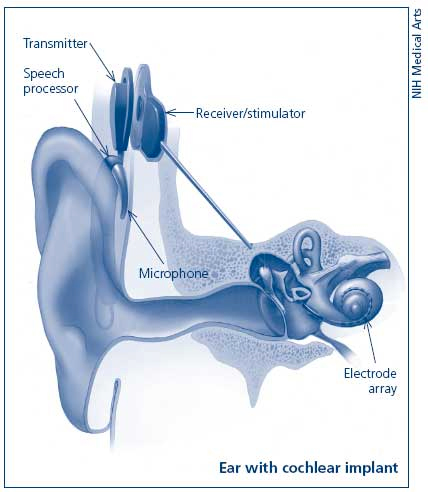 Links:http://www.marxists.org/reference/subject/philosophy/works/fr/lyotard.html BibliographyChorost, Michael. Rebuilt: How Becoming Part Computer Made Me More Human Houghton Mifflin, 2005. |

